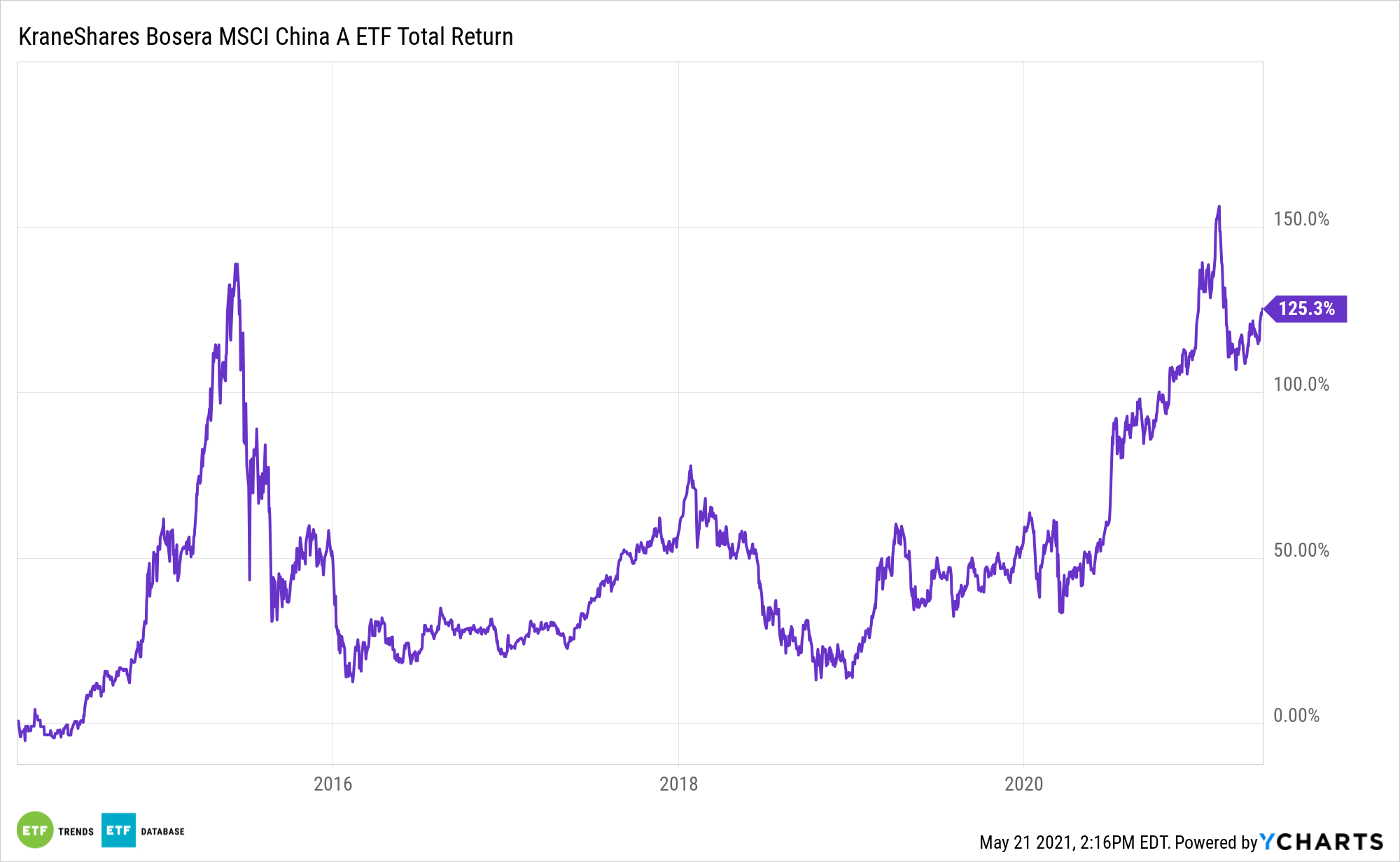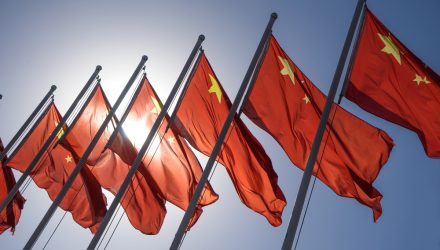Although MSCI has not upped the amount of China A-shares in its international indices since November 2019, institutional investors are not waiting to increase their exposure, finds new research from KraneShares.
“International investment in China’s Mainland equity markets is outpacing MSCI inclusion, which is no small feat considering full inclusion has the potential to drive over $400 billion of new money into China’s onshore market,” said Luke Oliver, head of strategy at KraneShares and author of the paper.
China: Substantial Opportunity For Investors
China currently accounts for 17% of the global GDP, while the U.S. makes up 24%. Estimates forecast China’s share could increase to 26% by 2030.
However, China still comprises just 5% of the MSCI All Country World Index, while the U.S. makes up 58% of the same index.
“The idea that the gap between market cap and economic significance should tighten, and will tighten with increased foreign investment, is at the heart of why we believe China is a substantial opportunity for investors,” said Oliver.
In 2018, MSCI projected that an initial 5% inclusion of China A-shares into its indices could result in an estimated $22 billion flowing into mainland equities.
This initial inclusion “dramatically widened” the investor base for China A-shares, said KraneShares. Before the inclusion, only 1,000 special segregated accounts (SPSAs) existed, accounts that are necessary for international investors to trade on the Shanghai and Shenzhen Exchanges through the Hong Kong Stock Connect.
To date, international institutions have opened over 10,000 SPSAs. In hard numbers, since the start of 2017 when inclusion was announced, through the end of April 2021, investors had bought $178 billion worth of China A-shares through the Hong Kong Connect.
As of April 30, this year alone has seen $23.5 billion in inflows.
MSCI China A Index Outperforms
Where those flows go matters. As more international investors flood into China A-shares, performance disparity is widening between the local CSI 300 Index and the MSCI China A Index, which grants access to Chinese markets for these foreign investors.
Beginning in 2020, the MSCI China A index has outperformed its local counterpart, the CSI 300 Index, by 561 basis points.
This is due in part to flows from MSCI clients utilizing their benchmarks, says Oliver.
“99 of 100 top global asset managers are clients of MSCI, 94% of US pension assets are benchmarked to MSCI indexes, and total assets benchmarked to MSCI indexes tops $14 trillion. As such, there is potential for this performance disparity to continue or even accelerate as international investors allocate new money to China through an MSCI lens,” he writes.
“With the growing fundamental story, historical underweights, and now increased access, it is not surprising global institutions are increasing their exposure and recognizing the China A-share opportunity beyond inclusion,” added Oliver.
For investors looking for access to the China A-share market, the KraneShares Bosera MSCI China A Share ETF (KBA) invests in China A-shares—specifically, the MSCI China A Share Index.
It captures mid cap and large cap representation of Chinese equities listed on the Shenzhen and Shanghai Stock Exchanges. It remains the largest MSCI-linked China A-share ETF available in the U.S.

For more news, information, and strategy, visit the China Insights Channel.

